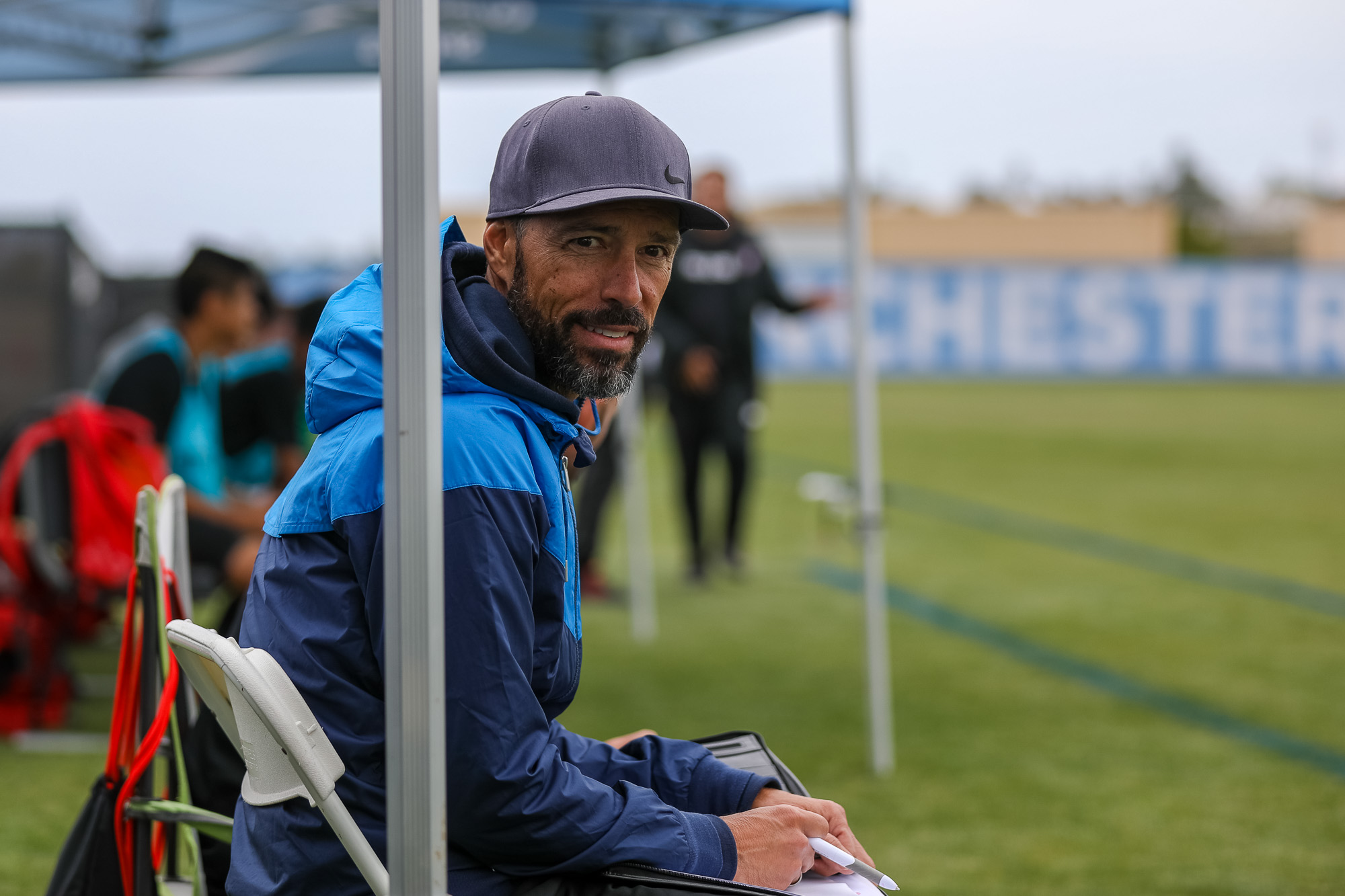The US Soccer Development Academy showcase and playoffs are happening over the next two weeks in Oceanside, California. The top youth soccer teams, l
The US Soccer Development Academy showcase and playoffs are happening over the next two weeks in Oceanside, California. The top youth soccer teams, like LAFC, will be on the field battling for championships and seeing how they stack up against the best in the country. (If you want to know more about USSDA vs US Youth Soccer vs US Club Soccer, you’re not alone. Click here.)
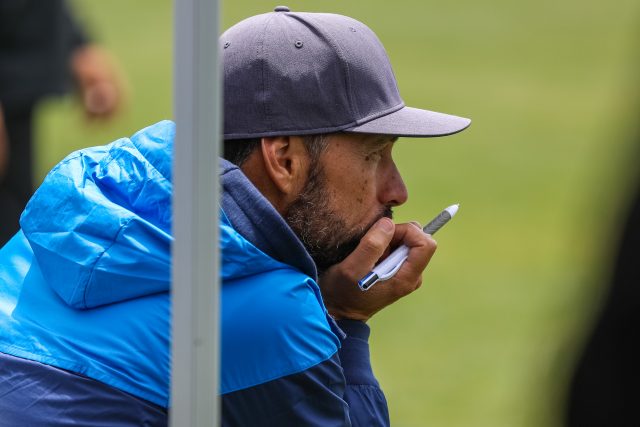
Every game has refs. Most DA games also have Scouts.
At a DA game, US Soccer makes sure every game has referees. And they also work hard to make sure most or all games have Scouts. The US Soccer Talent Identification department assigns Scouts to games to evaluate American players for Youth National Teams (YNTs).
I wanted to know more about US Soccer YNT Scouts and what they look for when they’re watching a game. At Man City Cup a few weeks ago, I joined Shawn Beyer at lunch during a break in his scouting assignments. Beyer is a Scout for US Soccer. We talked about the Scouting (Talent Identification) system and what scouts like him are looking for when they’re watching a game. What he told me is not just fascinating information for anyone curious about how USYNT players are discovered. Players who want to improve their soccer can take this information and apply it right away.

Curious about how kids are ID’d for a US Youth National Team? Want to improve your soccer? Read on.
SN: When you show up to a scouting assignment, what happens before the game starts?
SB: Each coach gives me a schematic. That schematic has the roster, date of birth, and the formation of the starting 11. Coaches can offer us recommendations before a game, like “keep an eye on this player.” They’ll write it on the schematic, or they’ll just tell us. I also do research before the game to see which players have been performing well, have already been part of YNT camp, or Talent ID Centers.

“Talent ID Center?” “YNT Camp?” What are those?
SN: What’s the difference between a Youth National Team and a Talent ID Center?
SB: Younger players can be identified by us and get invited to a “Talent ID Center.” It’s a one-day or a half-day event with lots of players where we take them through high-level training and scrimmages. It’s regional, and we make sure it’s at a location where everyone can drive there. The YNT camps are a smaller group of players from across the nation. These players have excelled at the ID Centers. It could be a week long training camp or an international tournament. These are all expenses paid.
SN: You mentioned that at your games, there will be kids who were already invited to camps and Talent ID centers. How did that happen for them?
SB: Most of these players have been scouted for years, have been through the YNT ID Centers, and they built up a long history. This is important to know: You don’t get invited to a camp or an ID Center because of one great performance at one game. You have to build up multiple reports and be scouted many times.

“Player Reports?”
SN: “Reports.” What are those?
SB: When we’re watching a game, we make notes on players. After the game, we will submit a report on each player that we feel is a candidate to be on a pathway to be on the National team.
SN: What happens with those reports?
SB: Each region has a Talent ID Manager. Those managers see all of the reports the scouts submit. We have an online system where we submit our reports. From these reports, our managers establish a depth chart for each age group. The top tier of the national depth chart would be the starting lineup for that year’s YNT, of course, then it goes down from there. The players at the top would have tons of reports. The more reports a player gets, the more consideration that player would get.
6 Key qualities of a national team player
SN: When you’re watching a game, what stands out most to you? What would a player do that merrits a “report?”
SB: There are six key qualities of a national team player. When we identify a player as a candidate, we rate them on all of those qualities. Those ratings go in our report on that player, with additional notes, too.

#1: Game awareness and decision making
SB: The main thing we look at is game awareness and decision making. Are their eyes up when they receive the ball? Do they analyze the field for positions of players and spaces to exploit? Are they looking around before they get the ball? If they trap the ball and then they’re looking around, it’s too late. I pay attention to players that draw my attention in a good way. I’ll start looking at them when they have the ball and when they don’t have the ball. What they do during transition moments is also very important. The game is so fast at the international level. You have to be able to transition from defending to attacking in a split second, or the game has passed you.
#2: Initiative
SB: The next quality is initiative. Does the player show initiative? Are they trying to be the player that makes a difference in the game? When they make a mistake, do they fight to get the ball back?
#3 Focus
SB: A player with great focus plays to win, is composed in behavior, enhances the team by executing his tasks.
#4: Optimal Technical skill
SB: Another key quality is technical skill. This must be at a high level.
SN: How do you define “technical skill?” People like you, at the highest levels of US Soccer, have your own language. Players and parents may not know these terms and really understand what you mean when you say “technical skill.”
SB: That’s a good point. We do have a shared and common language around the high-level soccer world. When we say “technical skill,” we mean ability to be effective in all situations and to be creative under pressure. “Ball skills” is rather vague. How are they with the ball at their feet? Dribbling. Speed. Changing direction with the ball. Finishing ability. Receiving the ball. Being able to weight their first touch, second touch, and their passes in the right way for that specific situation.
#5: Optimal Physical Ability
SB: Physical strength, or physical ability, is another key quality. We know that kids mature and hit puberty at different ages. This is why keeping reports over the years is so important. We can track these players as they move through their physical growth and how they handle it.
#6: Responsibility
SN: What’s the sixth quality?
SB: Responsibility. Do they contribute to their own development? Does a player take it upon himself for their own growth?
SN: How do you see that as a scout watching a player during a game?
SB: It’s difficult, but there are clues. Let’s say the game stops for an injury and play stops. The coach may say, “OK guys, bring it in. Come closer so I can talk to you.” One kid is stretching or not paying attention at all. Another player is, like, all ears & eyes on the coach. He’s obviously thinking, “The coach is giving us information right now that we can use to help us with our game and can help me be a better player.” A lot more of this happens at Talent ID centers. These players train all day with coaches and scouts. When the day is over, I bring in each kid in for a meeting at the end of the day. Were they paying attention? Or were they not? Do they care enough about their own improvement to really listen to me?
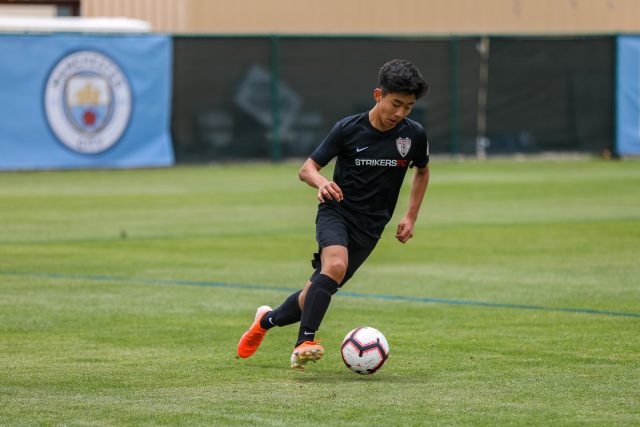
Do the best players HAVE to be on DA teams?
SN: It sounds like if a player wants to be considered for the US National Team, that player needs to be on a DA team to get scouted and compile these reports. Is there any way for a player who’s not on a DA team to make it to a Youth National Team?
SB: Ninety-five percent of my assignments are DA. That’s where we look. A kid who wants to be on the national team could benefit from the environment the DA provides. Because you have to remember: in a YNT Camp, you’re also going to be competing against those international kids who come from European and Mexican or South American professional academies into the national camps. So it can help prepare the player to have experience in the DA or international — training in Mexico, Europe, South America— if you have the goal of being on a US National Team.
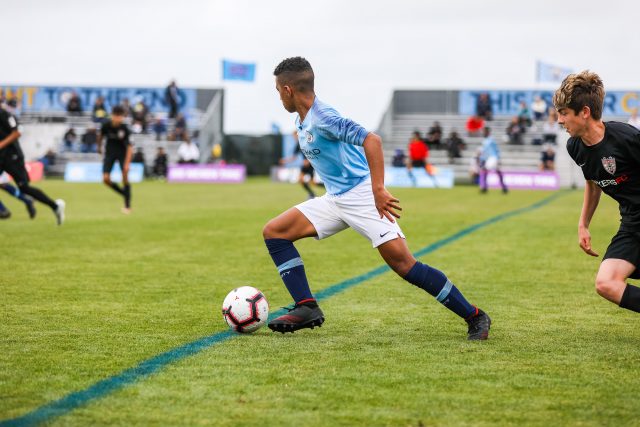
What about the kids who aren’t DA, but they think they’re at the level that’s good enough for a Youth National Team?
SN: What about the kids who aren’t DA, but they think they’re at the level that’s good enough for a Youth National Team?
SB: It would help them to be training four to five times a week in an organization that has a pathway to a pro team and a professional level of training and facilities. A pro environment, training against players as good or better every day. A non-DA team may not have that environment. But back to the player: Could that player be talented enough to be at that National team level? Maybe, but they need to get exposed to that environment. They need to be in that environment where they can develop that potential and see how they do.
Daniel Leyva was discovered through ODP in Las Vegas.
SB: There are top players that aren’t in DA. Maybe they just don’t have a DA team close enough. But those players need to be taking responsibility over their development. If a kid works hard enough and gets himself into good programs like ODP or ID2 or other areas where scouts have access, we’ll find out about them. Daniel Leyva [16-yr-old, Seattle Sounders] was discovered through ODP in Vegas. He didn’t have a DA near him when he was younger. His market didn’t have a DA program for him. But he took it upon himself. He took the initiative. He got scouted, and now he’s in Seattle in a great MLS DA system. If you’re not obsessed, in a healthy way, with your own development, don’t expect to make it. You can be blessed with ridiculous talent, but it has to be developed. You likely won’t just cruise your way to get the top level, but you need to take responsibility to develop your talent with the best resources you can get.
Is it worth the sacrifice?
SN: Kids and families are having to decide at younger and younger ages that they’re going to focus on soccer, that they’re not going to play in high school or have much of a social life outside of soccer through their teen years. Not all of these kids will become professional soccer players or make the National Team. In fact, most won’t. Is it worth the sacrifice? What do they gain for giving up so much to help the one percent who do end up on the National Team?
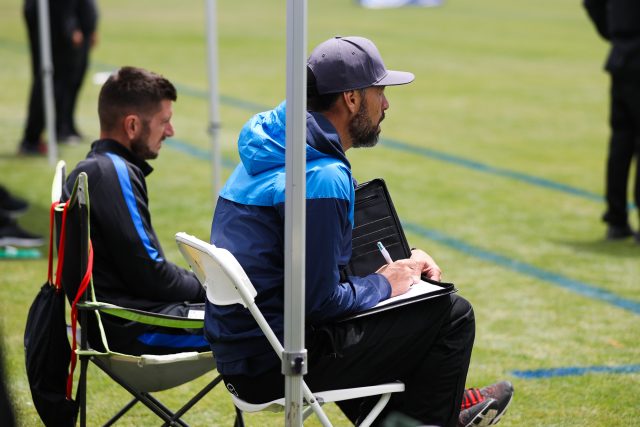
For players who are that driven, it’s not a sacrifice.
SB: These days, a player needs to decide by the time they’re fourteen or fifteen or even earlier if they want to be in this professional environment. That means giving up other sports and high school soccer. And they need to want to give that up. For players who are that driven, it’s not a sacrifice. They give it up willingly. The end goal might be the national team call up, but if that doesn’t happen, there are so many other benefits. They challenged themselves against the best in the country. They’ll be able to take that into their adult lives. Ninety-nine percent aren’t going to be pro. It’s true. If you want to go pro, that is not likely college any more. These DA players will not be all on the national team, and college soccer is a great path for so many of them.

Take these qualities to heart if you want to improve.
Thank you, Shawn, for taking the time to talk to me during your day of scouting! To any player who wants to improve his or her game, look at the qualities Shawn Beyer has described, and apply that to your own soccer training and environment. You’ll be glad you did!
